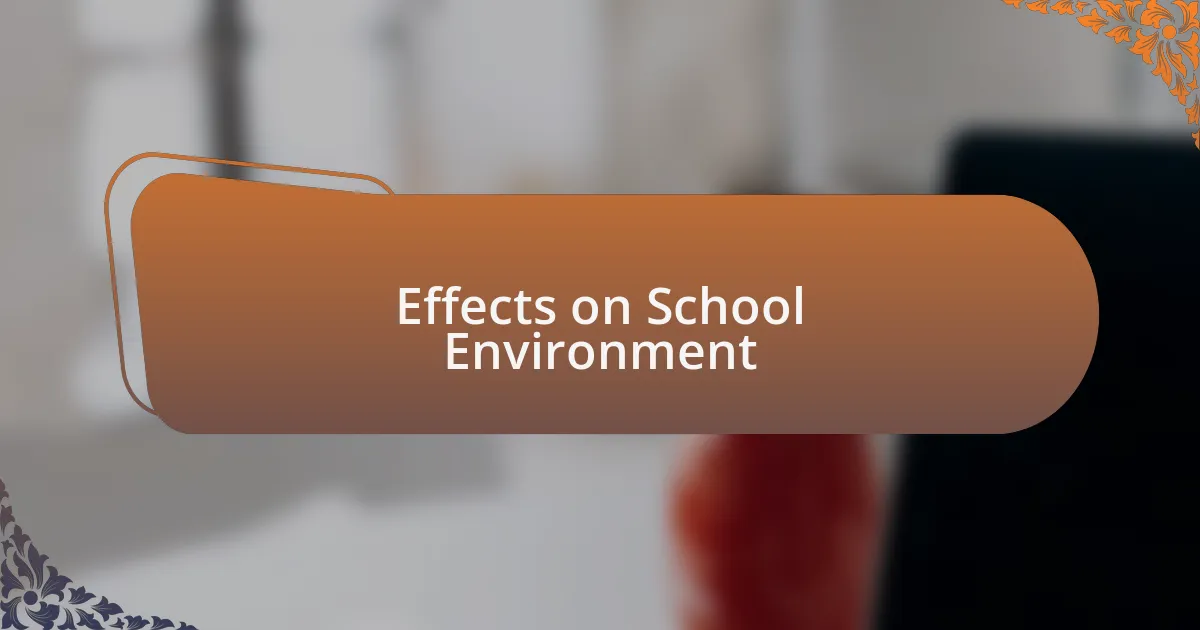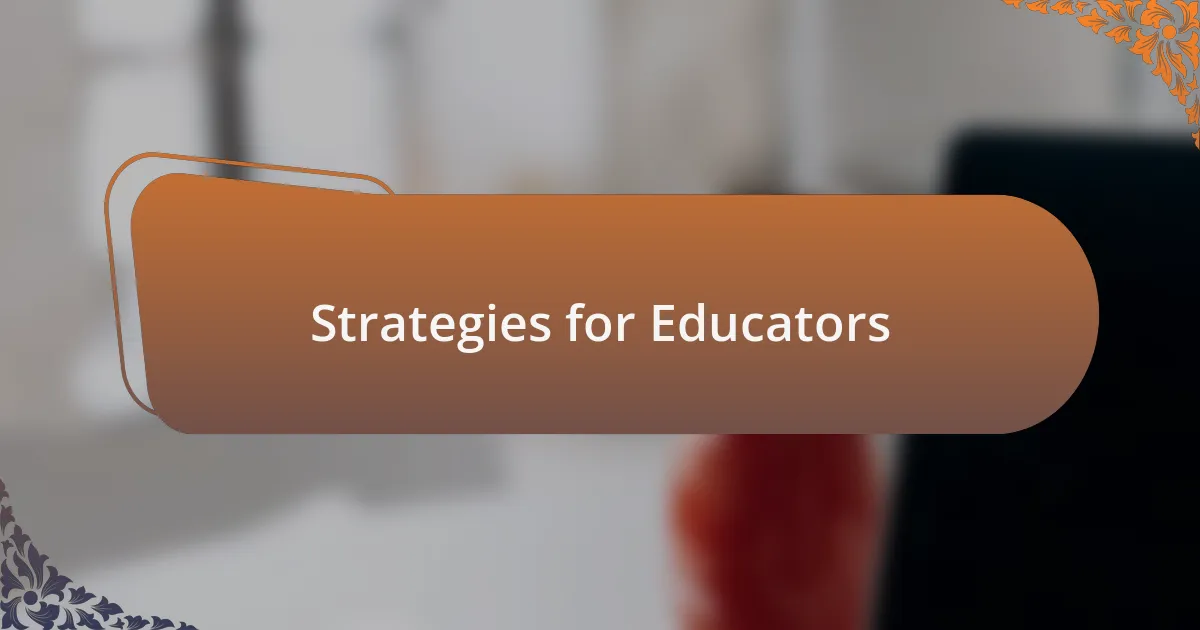Key takeaways:
- Selective mutism is caused by anxiety, not a choice or behavioral issue, leading to profound silence in social situations.
- Creating supportive environments and using non-verbal communication techniques can help children with selective mutism express themselves.
- Collaboration among educators, parents, and support staff is crucial in fostering understanding and support for affected students.
- Celebrating small communication breakthroughs and promoting patience can significantly impact a child’s confidence and ability to interact.

Understanding Selective Mutism
Selective mutism is often misunderstood as just shyness, but it’s so much deeper than that. In my journey, I’ve seen children struggle to speak not because they don’t want to, but because their anxiety locks their voices away. Have you ever felt completely frozen in a situation where everyone expects you to speak? For these kids, that’s a daily reality; their silence might be a protective shield against overwhelming pressure and fears.
It’s crucial to recognize that selective mutism is not a choice or a behavioral issue. I remember a student who would light up when drawing or playing with toys, yet clammed up entirely when it was time for group discussions. This stark contrast reveals a hidden world of communication that isn’t readily apparent. Have you noticed how some children flourish in quieter, more comfortable settings, only to retreat when facing larger crowds? This dichotomy underscores the importance of creating supportive environments that encourage gradual interaction without judgment.
Understanding selective mutism requires patience and empathy. When I’ve witnessed teachers who take the time to build trust—like using gentle prompts or allowing one-on-one interactions—it has made a remarkable difference. Can you imagine the relief a child feels when they don’t have to speak on command? It’s in those small victories that we can truly appreciate the complexities of their experience and help pave the way for their voices to emerge.

Signs of Selective Mutism
It can be quite striking to observe the signs of selective mutism in children. For example, they may avoid eye contact or communicate primarily through gestures instead of speaking. I once noticed a child who would nod enthusiastically to answer questions but would completely freeze if someone asked them to vocalize their thoughts. Doesn’t it make you wonder what goes on in their minds during those silent moments?
Another indication might be their ability to speak very freely at home, yet become entirely silent in social situations or at school. In my experience, these children often express comfort in familiar settings, showcasing their true selves with family or close friends. Have you ever seen someone light up in a safe environment only to shrink back when placed in new social interactions? It’s a poignant reminder that their silence isn’t a lack of ability, but rather a reflection of their emotional state.
Additionally, these children may display physical signs of anxiety, such as fidgeting or sweating when facing the expectation to speak. I recall a student who would often bite their nails or pull at their sleeves, revealing their discomfort. It’s compelling to consider how our body language can communicate what our voices cannot, don’t you think? These subtle signs are essential to recognize, as they can guide educators and peers in providing the necessary support.

Effects on School Environment
The effects of selective mutism on the school environment can be profound and multifaceted. I recall a school setting where a child with selective mutism felt invisible among their peers. Even though they exhibited incredible potential, their lack of verbal interaction often led teachers to overlook their contributions. Have you ever witnessed someone brilliant go unnoticed simply because they struggle to express themselves verbally?
Furthermore, this silence can create a ripple effect across the classroom dynamic. Other students might be curious or even confused about a peer who doesn’t speak, leading to misunderstandings. I’ve seen children inadvertently isolate a classmate out of uncertainty. It’s important to consider how this absence of communication doesn’t just affect the individual, but the entire learning atmosphere.
Finally, the school environment often emphasizes participation and vocal expression which can unintentionally pressure a child with selective mutism. In one instance, I observed a teacher who unknowingly increased a student’s anxiety by frequently calling on them. How can we nurture an environment that balances encouragement with understanding? It’s essential for educators to find ways to engage students who are silent, allowing them to feel valued and included without the overwhelming pressure to speak.

Strategies for Educators
Creating an inclusive environment for students with selective mutism requires thoughtful strategies. One approach I found effective is fostering a connection between the child and their peers through non-verbal activities. For example, in one classroom, I encouraged collaborative projects where students could work in pairs or small groups, allowing the child to communicate through gestures or written notes. This not only helped them feel part of the team but also eased their anxiety about speaking in front of the whole class.
Another strategy I recommend is to provide opportunities for low-pressure speaking. During one lesson, I introduced a “whispering circle” where students shared thoughts quietly with their neighbor. This simple shift created a safe space for all children, including those with selective mutism, to express themselves without the fear of being in the spotlight. How often do we overlook the power of intimate, smaller settings to empower our quieter students?
Lastly, I’ve seen remarkable outcomes when educators actively incorporate visual aids and alternative communication methods. In my experience, using pictures or symbols gave children a voice even when words felt daunting. Once, a student used a board with images to convey their thoughts about a project, and the excitement on their face was unforgettable. It made me wonder: when we embrace diverse communication methods, are we not opening doors for all our students to shine?

Effective Communication Techniques
Effective communication techniques in school settings go beyond just spoken words. One method I found particularly engaging is using “picture exchange communication systems” (PECS). When I introduced PECS in my classroom, one specific student who struggled to speak found a newfound way to interact. They would hand me a picture of a book when they wanted to read, and seeing their face light up as they communicated their needs was simply transformative. Is there anything more rewarding than witnessing a child express themselves for the first time?
In addition to visual tools, I advocate for the power of storytelling. During quiet periods, I would ask students to share their favorite stories or experiences, with the option to do so through drawings or written words. I remember a shy child who usually remained silent in group discussions but blossomed when asked to illustrate their story on paper. This small adjustment made a significant difference, giving them an avenue to communicate without the pressure of speaking out loud. Could we perhaps harness the power of narratives to help our quieter students feel seen and heard?
Lastly, I’ve discovered that using a buddy system fosters a sense of security during interactions. Pairing a student with selective mutism with a supportive classmate allows them to practice communication in a stress-free environment. I once witnessed a beautiful moment where a buddy had encouraged a child to share a simple greeting during morning circle time. Although it was just a soft “hello,” the pride and joy on that child’s face were utterly heartwarming. Isn’t it fascinating how a little support can spark such powerful connections?

Building a Supportive Network
Building a supportive network is crucial for fostering an environment where students with selective mutism can thrive. I once collaborated with a group of teachers, and we implemented regular check-ins to discuss the needs of a student who often felt overlooked. It was eye-opening to discover how sharing strategies not only empowered us but also created a unified front of encouragement for the child. Isn’t it amazing how a collective effort can make a significant difference?
In my experience, involving parents in the conversation is equally important. I remember reaching out to the family of a student who rarely spoke in class, and together we established a communication plan that worked for everyone. This partnership not only built trust but also ensured that the student felt understood and supported both at home and in school. Don’t you think when families and educators collaborate, it sends a strong message that the child’s voice matters, even when words may not flow freely?
Finally, connecting with support staff can also enhance the student’s experience. At one school, I reached out to our school counselor to offer additional resources for a child struggling with anxiety. This collaboration provided tailored support and allowed the student to gradually find comfort in expressing themselves. How powerful is it to know that, behind every shy smile, there’s a network of caring individuals ready to help?

Personal Experiences and Insights
I remember the emotional rollercoaster one particular student went through during their first year in school. They rarely spoke, but when they finally whispered their name to me, it felt like a breakthrough. That small moment reminded me how vital it is to celebrate even the tiniest steps in communication—every word counts when silence feels safer.
From my observance, creating an environment where students can express themselves without fear of judgment is essential. I recall a classroom activity designed to let students share their thoughts through drawings instead of spoken words. Watching my student flourish as they depicted their emotions visually was a powerful reminder that communication isn’t confined to verbal expressions. Isn’t it remarkable how art can bridge gaps that words sometimes cannot?
Also, I found that patience can be a game-changer. The first time I attempted to engage with a particularly reserved student, it took multiple attempts before they even glanced my way. But those moments of silent persistence were fuel for growth. I can’t help but wonder—how often do we underestimate the power of simply being present and giving someone the time they need?